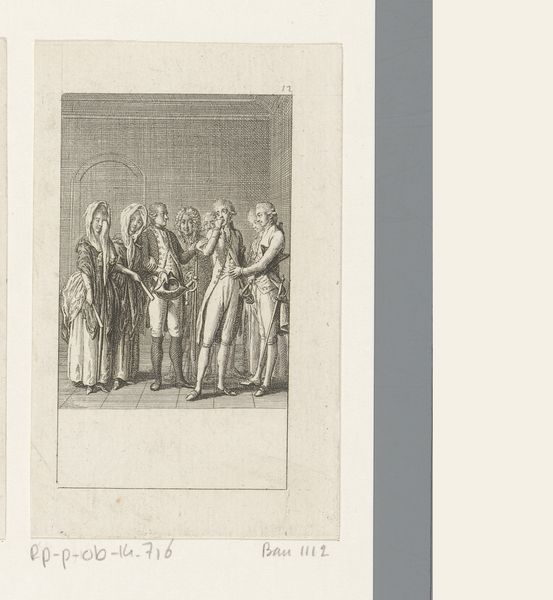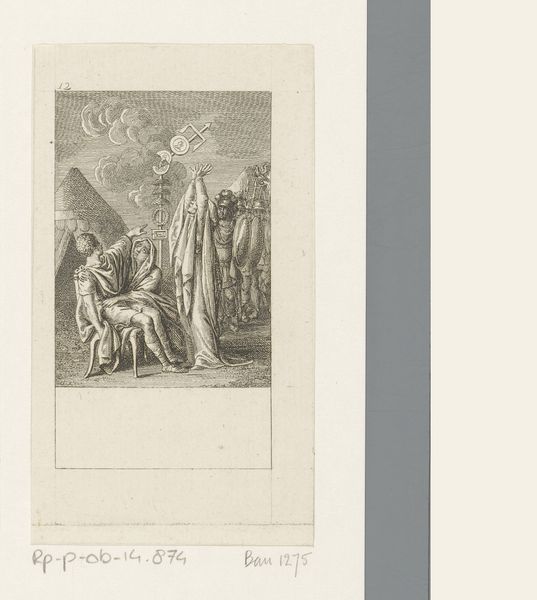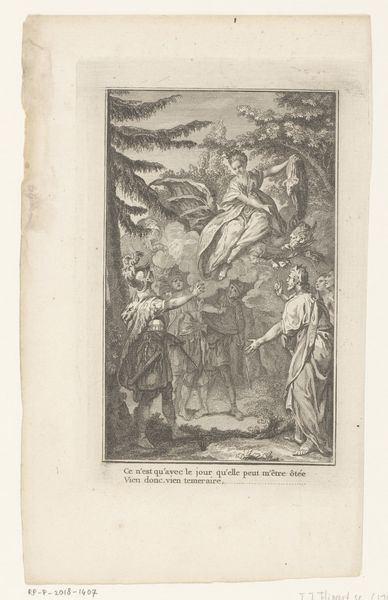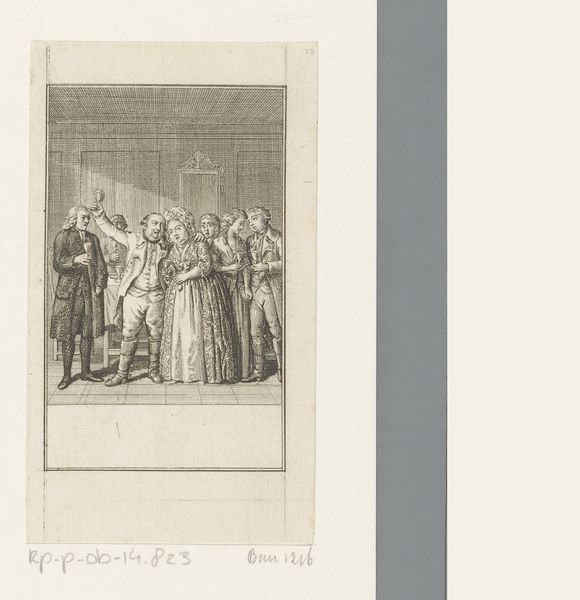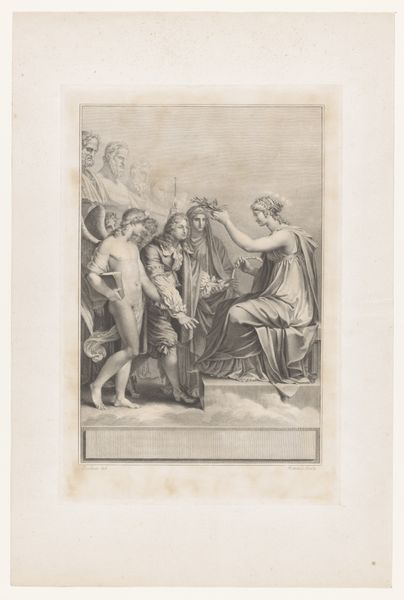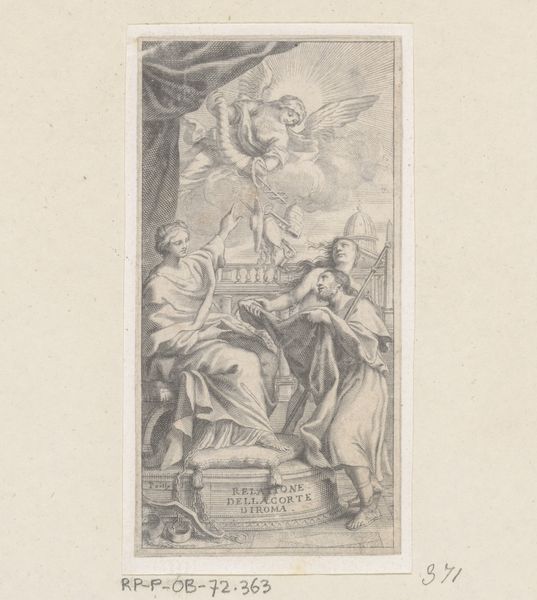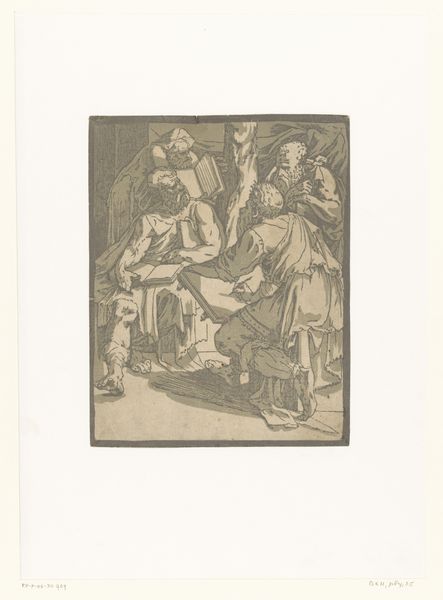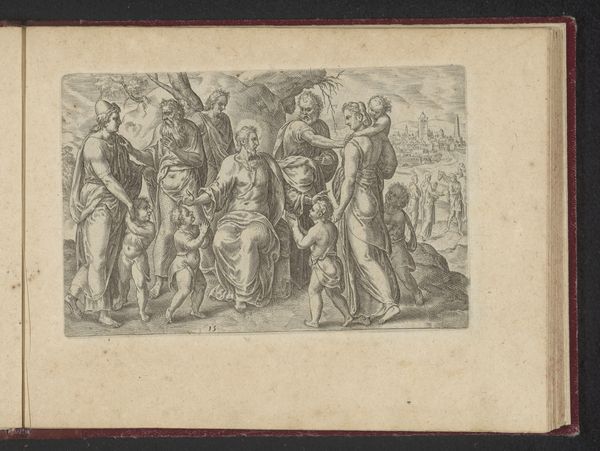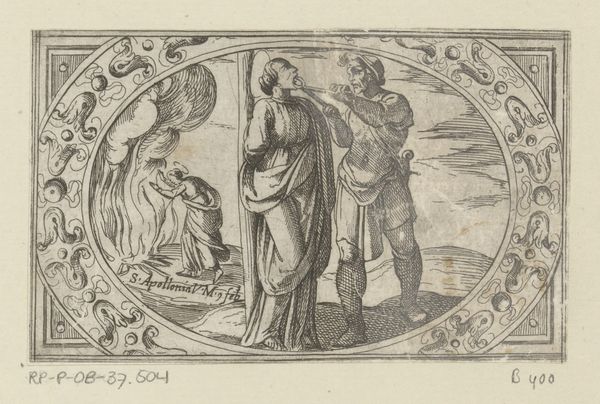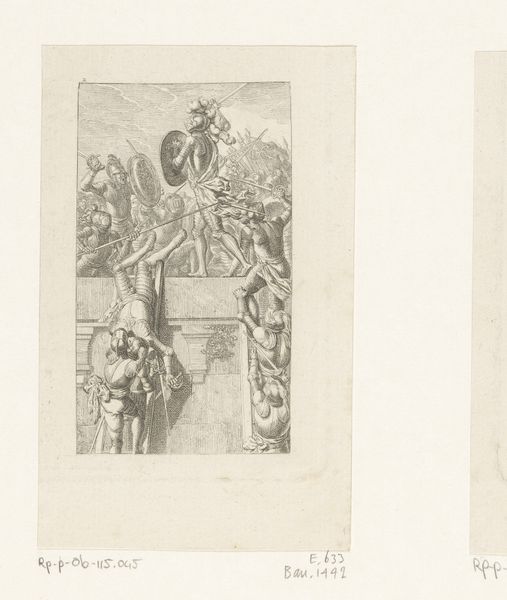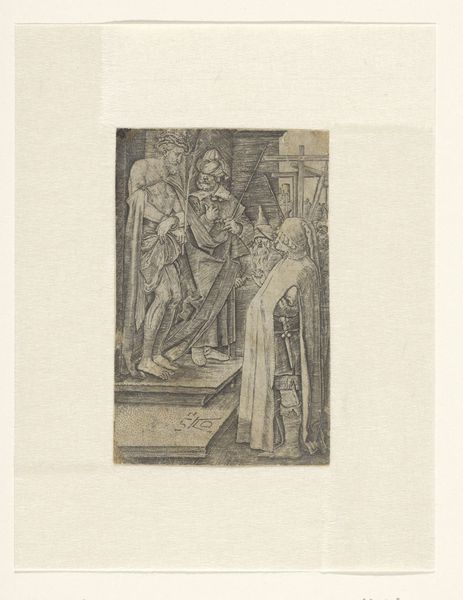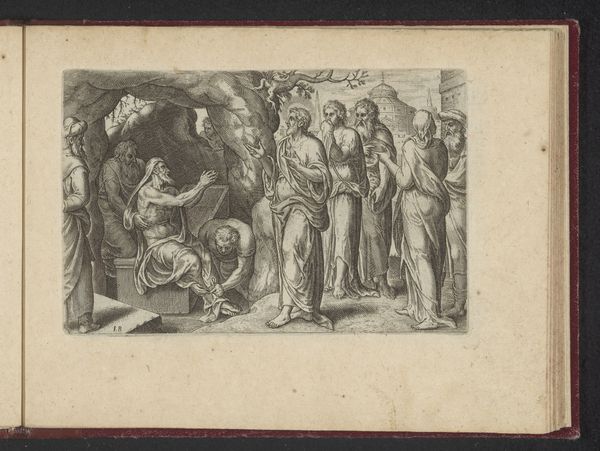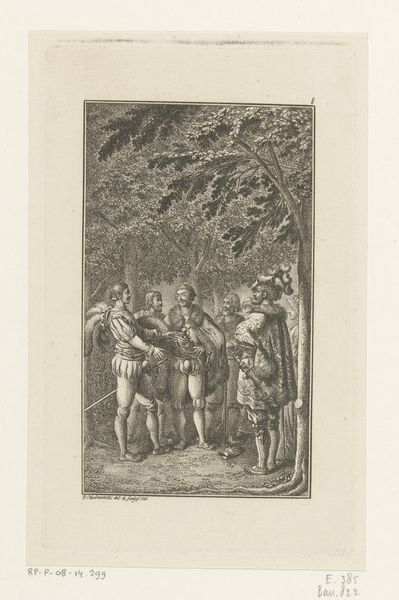
print, woodcut, engraving
# print
#
figuration
#
11_renaissance
#
woodcut
#
line
#
history-painting
#
northern-renaissance
#
engraving
Dimensions: height 116 mm, width 73 mm
Copyright: Rijks Museum: Open Domain
Curator: This woodcut is titled "Crucifixion" by Albrecht Durer, completed in 1511. It resides here at the Rijksmuseum. What’s your first impression? Editor: Stark. It’s a high-contrast scene rendered in intricate lines; the anguish feels almost tactile. The textures, the way the light seems to catch on the figures... it’s masterfully executed given the limitations of the woodcut medium. Curator: Indeed. Dürer's influence on the printmaking medium cannot be overstated. Consider how this work disseminated religious imagery and reinforced cultural norms surrounding faith during the early 16th century. Its availability as a printed image also enabled broader access to religious art. Editor: And look at the quality! Think about the labour involved in achieving such precision. The sharp lines and the subtle gradations—all carved into wood. This wasn't just art; it was skilled craft labor distributed and consumed like never before. It is so accessible, a fairly small piece that could be held. Curator: Absolutely. Moreover, consider the historical context. The rise of printmaking coincides with a burgeoning merchant class and the Protestant Reformation. Durer navigates this complex religious and social landscape, producing art that speaks to shifting allegiances and new forms of piety. Editor: I’m particularly struck by the positioning of the skull at the base of the cross; is it symbolic of Adam? The skull looks smooth from wear, an often replicated symbol within a cultural ecosystem of religious art, readily available and consumed by believers. Curator: Yes, exactly. The skull often represents Adam, a visual reminder of original sin, connecting Christ’s sacrifice to the redemption of humanity. The arrangement is not novel in itself, but Dürer's skill imbued this scene with fresh emotional depth and gravitas. Editor: The social commentary comes through loud and clear because of how detailed this piece is! It feels relevant even centuries later, if not perhaps more so in this age of mass consumption. Seeing it now reminds me that the relationship between art, labor, and society is nothing new! Curator: And that’s precisely what makes Dürer’s work enduring. It operates as both a reflection of its time and as a mirror to our own societal preoccupations with image making, faith, and the economics of art. Editor: It really encourages one to think about the labour of art-making and of cultural shifts; definitely left an impression!
Comments
No comments
Be the first to comment and join the conversation on the ultimate creative platform.
